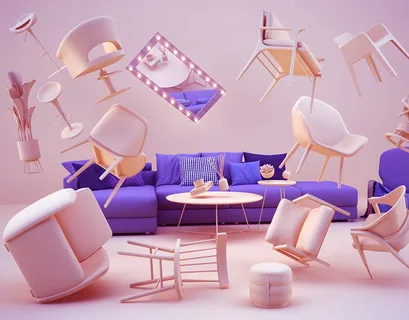In the world of furniture designing, 3D rendering is no longer a luxury but a necessity, and various Furniture Rendering Techniques play a crucial role. Now, clients want to see how their furniture will look in real time, and their expectations do not end here. They also want to visualize the proportions of their furniture, along with texturing and more. It is the duty of an interior designer to ensure the right Rendering techniques are applied in terms of furniture.
Now the question that needs to be dealt with is how to successfully obtain photorealistic furniture rendering. A detailed answer to these questions lies in the article below. It details a proven set of techniques that will help you obtain error-free results.
Utmost Photorealistic Furniture Rendering Methods
Here are some of the tested techniques for furniture rendering to make them highly photorealistic:
Pragmatic 3D Modeling
The foremost stage in furniture rendering is assuring that a digital model is precise. If that is not the case, then the next stages will also be impacted by this. Precise dimensions are the pinnacle of any rendering because even a minor mistake can make the whole rendering process ineffective, thus diminishing the visual quality.
Physical-Based Rendering
This process refers to knowing how different materials react to different lighting situations. From a wooden grain to a metallic surface, every material reflects in a particular way when reflected by the lights. PBR dictates the following:
- Utilizing low resolution for materials & textures
- Do not overdo a furniture’s surface as it can lead to an unrealistic outcome
Right Resolution, Right Textures!
The more detailed and accurate your texturing is, the more photorealistic your applied materials will be. But the right texturing depends on the resolution used for materials. Such as:
- In a rendering for smaller projects, 2K resolution is the most suitable
- If in a rendering, close-up photorealistic views are required, then 4K is the most optimal way to go
- If the purpose is to market furniture or an interior, then 8K resolution is ideal.
Proper Lighting Setup
When it comes to furniture, life-like Photorealistic 3D Rendering can only be achieved when the lighting is proper. Contrarily, insufficient lighting can result in unsatisfactory visuals for a client. As a result of this, they will not be able to connect with the visual. That is why proper lighting is essential for a client to have an immersive experience.
Angle & Composition
Note that, although photorealism is essential, another contributory factor that impacts a furniture rendering is how it is presented. For this, three things are essential to consider, which are as follows:
- The first thing is the position of the camera. Ensure that it is either at eye level or just slightly above
- Secondly, the composition of elements must be balanced; it refers to the arrangement of visual elements, which must be harmonious
Supplemental Tips for Enhanced Rendering Effect
To intensify the overall effect of realism in furniture rendering, here are some additional tips:
- Make sure that in the corners, the necessary shadowing is done
- Do not forget about the refraction, that is, light is properly deflected from the glass and other transparent materials
- Find the perfect balance by ensuring that the color scheme is neither sharp nor dull
Advanced 3D Rendering Engines for Interior Design
Interior Design Services use a number of different software for different projects. It is paramount to know which 3D software is the right one. There are numerous options available in the market, and knowing which one to pick can be tricky.
We have solved this problem for you. As discussed below, we will list out some of the most influential 3D rendering engines. They are capable of performing an array of services. From interior and exterior design to virtual reality, Aerial and 3D Furniture Rendering Services. The following is the list:
- Maya
- Corona
- V-Ray
- SketchUp
- Lumion
- Unreal Engine
- Auto CAD
- Autodesk Revit
- 3Ds Max
- Enscape
Ending Remarks
In this article, we have detailed the furniture rendering techniques and covered the entire process efficiently. By following this article, you will have all the necessary information in your hands. However, knowing is not enough; it is also important to apply the techniques correctly. The process of creating photorealistic furniture is the culmination of both analytical and technical prowess. That is why hiring a professional rendering firm is the right way to go for your design purposes. Whether they are for furniture, interior, or any other, the most credible and technology-driven choice is SMA Archiv with the highest success ratio in the United States.



